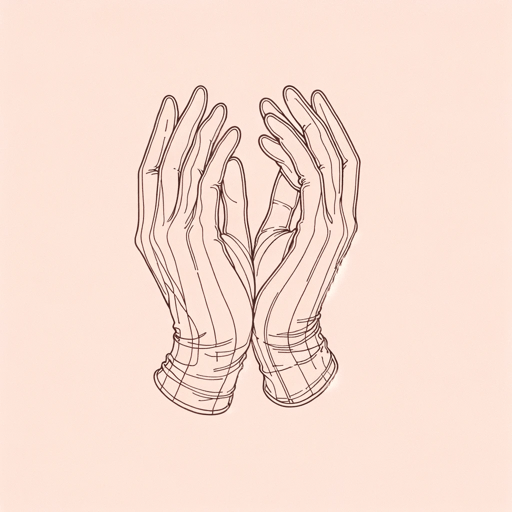22 pages • 44 minutes read
Robert BrowningFra Lippo Lippi
Fiction | Poem | Adult | Published in 1855A modern alternative to SparkNotes and CliffsNotes, SuperSummary offers high-quality Study Guides with detailed chapter summaries and analysis of major themes, characters, and more.
Summary and Study Guide
Overview
“Fra Lippo Lippi” is a poem by Robert Browning (1812-1889), written in the form of a dramatic monologue. It was first published in the collection, Men and Women (1855) during the Victorian era. This historical poem centers on the 15th-century Carmelite monk, Fra Lippo Lippi, who was a famous Italian painter. Browning relied on an account of the monk’s life in Giorgio Vasari’s Lives of the Most Excellent Painters, Sculptors, and Architects (1568), but took poetic liberties with some of the facts for the sake of the poem’s narrative arc. Set in Florence, the poem’s action centers on the night Fra Lippo Lippi is stopped by some guardsmen at an “alley’s end [w]here sportive ladies leave their doors ajar” (Line 6). Lippo then goes on a lengthy justification for how he came to be in that area of town. The poem addresses some scandalous topics, as Lippo confesses to lascivious behavior, questions the piety of religious figures, discusses economic privilege, and enumerates his artistic frustrations. It is widely considered one of Browning’s most significant poems.
Poet Biography
On May 7, 1812, Robert Browning was born to Robert Browning Sr. and Sarah Anna Wiedemann in Camberwell, Surrey, near London. He had one younger sister, Sarianna, with whom he was close. Browning admired his mother’s musical talent and his father’s extensive book collection. Educated at home, Browning spoke Greek, Latin, Italian, and French fluently by the time he was 14. He greatly admired the British Romantic poets of the previous generation, particularly Percey Bysshe Shelley, and began to write poetry. He lived with his parents into adulthood, eschewing formal schooling and embarking on a defined career.
He self-published Pauline, a Fragment of a Confession anonymously in 1833 and it did not sell, although some critics felt it showed poetic potential. Two years later, his epic poem Paracelsus received attention from notable authors of the time: William Wordsworth, Charles Dickens, and Alfred, Lord Tennyson. This gained him access to the London literary world and its contacts. However, after visiting Italy in 1838, he began Sordella, a long poem in the style of Dante Alighieri. It was widely ridiculed when published in 1840 and harmed his reputation as a writer.
In 1841, a series of eight pamphlets, Bells and Pomegranates, featuring his plays and poems, was published. The volume of 1842 included several of his most important poems, including “My Last Duchess,” “Soliloquy of the Spanish Cloister,” and “Porphyria’s Lover.” However, even these did not fully help his reputation.
When established poet Elizabeth Barrett praised Browning’s talent in 1845, things began to change personally and professionally for Browning. The two fell in love and eloped to Italy in 1846. There, the ill Elizabeth’s health improved, but her father disinherited her when he discovered she had married. As Browning cared for Elizabeth, encouraged her own writing output, and helped raise their son Pen (born in 1849), he put his own career aside for a time.
Pen’s birth was accompanied by a financial gift from a family member, and the family moved to Florence—where Browning would later set “Fra Lippo Lippi”—for several years. Browning wrote Christmas-Eve and Easter-Day in 1850, a book of essays, and the collection Men and Women. Although the volume, when published in 1855, had little impact critically or financially, it was later revered for “Fra Lippo Lippi” and its other dramatic monologues.
In 1859, Elizabeth died from her illnesses, and Browning and Pen returned to London. There, Browning edited Elizabeth’s Last Poems and released his own collection, Dramatis Personae, in 1864, which received a warm critical reception. From 1868 to 1869, he worked on an epic poem called The Ring and the Book, which was considered a tour de force of dramatic poetry and became vastly popular. Once ridiculed, Browning became one of England’s most well-known and respected poets.
In the 1870s and 1880s, he produced several poetry collections and attended several speaking engagements. In 1889, while staying in Italy with his son, Browning became seriously ill, dying on December 12. His final volume of verse, Asolando: Fancies and Facts, was published on the same day. When his body was conveyed to Westminster Abbey and interred in Poets’ Corner, thousands of people lined the streets.
Poem Text
Browning, Robert. “Fra Lippo Lippi.” 1855. Poetry Foundation.
Summary
One night in 15th-century Italy, Fra Lippo Lippi, a monk and painter, is caught by guardsmen in a questionable area of the city, assumedly about to visit a sex worker. Outraged, Lippo notes that he is employed by the wealthy “Cosimo of the Medici” (Line 17), an important politician, and demands his release. He bribes the other men and insists he’ll explain everything to the head guard, who seems sympathetic.
Lippo explains how he has been working on religious paintings for Cosimo de Medici non-stop, but when he saw festival revelers below his window, he couldn’t resist joining them and escaped from his locked room. After enjoying their company, he tried to return home, but was caught. The head guard notes his disapproval since Lippo is a monk, but Lippo explains how he never wanted to be a monk in the first place, recounting how he was orphaned, then taken to the convent. At the tender age of “eight” (Line 102), he was asked to renounce the world and join the order. He didn’t really see that he had a choice if he didn’t want to starve.
Being given room and board helps Lippo survive, but he doesn’t learn Latin well and is almost kicked out on the street again after covering every available surface with drawings. However, the Prior sees potential for him to create paintings for the church and lets him stay. When he paints highly realistic portraits of church-goers, and includes the Prior’s mistress, Lippo is ordered to “rub all out” (Line 194). Along with other learned men, the Prior admonishes him to paint the soul, not the flesh. Lippo finds this ridiculous as he feels the two are forever intertwined. Lippo tells the guard that he was too young to renounce worldly pleasure and now resents the Prior, although he tries to sublimate his rage. He will leave other artists to battle for more realistic art in the future.
Lippo then tells the guardsman his philosophy regarding art, beauty, and God and suggests painting truthfully is a holy act that creates both empathy and awe in the viewer. Lippo notes that he feels restricted by religious hypocrisy and cheated by the economic necessity of creating religious subject matter for patrons like de Medici. He recounts how a recent fresco he painted has been destroyed by the “pious people” (Line 330) who defaced it in their fervor. He condemns them but then apologizes as he remembers the guard can imprison him for his earlier, illicit visit. Lippo assures the guard he will make amends for his bad behavior by creating a painting to be installed at the church of Sant’Ambrogio. This religious painting will feature all the prominent Italian saints, and as he imagines, Lippo places himself in their company. He envisions an angel who will declare him worthy, a Saint Lucy who will lead him to a new beginning. As dawn breaks him out of his reverie, he hurries away to return to his room at de Medici’s to finish his religious portrait of Saint Jerome, swearing as he goes.
Related Titles
By Robert Browning






